Scientists at Dundee
The University of Dundee has had during its 125 year history many worthy scientists on its staff. Listed below are some of those most worthy of mention:
- Thomas Carnelley (1852-1890)
- Thomas Caxton Fidler (1841-1917)
- Johannes Petrus Kuenen(1866-1922)
- Professor John Steggall (1855-1935)
- Professor James Alfred Ewing (1855-1935)
- William Peddie (1861-1946)
- Principal Angus Fulton (1871-1958)
- Professor Margaret Fairlie (1891-1963)
- George Dawson Preston (1896-1972)
- Professor Arthur Donald Walsh (1916-1977)
- Professor David Rutherford Dow (1889-1979)
- Peter LeComber (1941-1992)
- Walter Spear (1921-2008)
See also our page on great Naturalists at Dundee
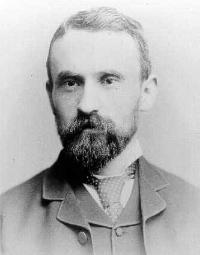
Thomas Carnelley (1852-1890)
Thomas Carnelley arrived at Dundee in 1882 to become a Professor setting up a laboratory and department for the second time. His first had been at Firth College, Sheffield. After much appreciated work in both town and college in Dundee he was appointed Professor at Aberdeen 1888. His major contributions to the study of chemistry were from his support and research on the Benzene - used in the production of modern materials such as plastics and on Periodic Law. He died tragically at the age of 38.

Thomas Claxton Fidler (1841-1917)
In 1891 Thomas Fidler succeeded Alfred Ewing to the Chair of Engineering & Drawing at University College, Dundee. By 1860 he was specialising in Railways and Railway bridges. His Practical Treatise on Bridge Construction was published in 1887. It was described by one expert as "by far the clearest, most thorough and generally efficient book on the theory of bridge construction which we at present possess in the English Language". He retired in 1909, but before his death would have a considerable influence on parts of D'Arcy Thompson's great book On Growth and Form, thus indirectly influencing architects and engineers around the world.
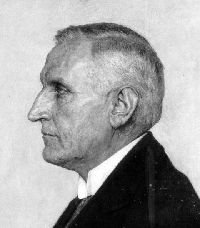
Johannes Petrus Kuenen (1866-1922)
Johannes Kuenen started his study at Leiden in 1884. In 1895 he was appointed to a professorship of Physics at University College, Dundee where he stayed till 1906. He is well known for his work on material state (gas, solid and liquid) equilbra that led to such work as the liquidification and solidification of Helium.
While pursuing investigations into the subject Kuenen discovered the phenomenon of retrograde condensation. That is if the volume of two gases, kept at constant temperature and pressure below critical conditions, is gradually reduced condensation will start when a certain volume is reached, the amount of condensation will gradually increase upon further reduction in volume, until the gases are finally liquefied. If the composition of the gases lies between their so-called true and pseudo critical points the condensation formed will disappear on continued reduction of volume. This disappearance of condensation is called retrograde condensation - it finds an application in the recovery of gasoline from gas wells. He designed many instruments for use in study and contributed numerous pieces of data.

Professor John Steggall (1855-1935)
In 1883 Steggall was elected to a Chair in Mathematics and Natural Philosophy at University College, Dundee. In 1895 the responsibility of shouldering two separate departments was considerable and a division was made. He continued as Professor of Pure and Applied Mathematics until he retired in 1933.
His chief interest lay in the theory of numbers and kinematical geometry. William Peddie said of him "The generation of British mathematics to which Steggall belonged delighted in proposing and working out problems whose solutions might require the aid of any branch of pure or applied mathematics." He remained an exceptional examiner who maintained an alertness and freshness of outlook to the end. He was a central figure at the college in his time, participating in all aspects of University life. The college magazine was in great praise of his attendance at Student Society meetings and he was a popular Honorary President of the society for some years. His position and sense of duty made him an important figure to the students.

Professor James Alfred Ewing (1855-1935)
Ewing was born and educated in Dundee and studied engineering on a scholarship at Edinburgh University. He helped Sir William Thomson, later Lord Kelvin in a cable laying project. In 1878 he became professor of Mechanical Engineering and Physics at Tokyo University, where he devised instruments for measuring earthquakes. He came to University College, Dundee as the first Professor of Engineering but when a Chair became vacant in Cambridge Ewing moved. In 1890 discovered and explained magnetic hysteresis. In 1903 he moved to the Admiralty as head of education and training. In the First World War he and his staff took on the task of deciphering coded messages. In 1916 he became Principal and Vice-Chancellor of Edinburgh University. He was Knighted in 1911.
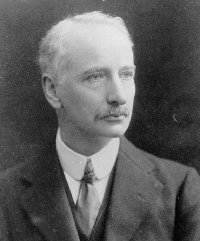
William Peddie (1861-1946)
William Peddie was originally from Orkney. 1891 saw the publication of the 1st edition of the 'Manual of Physics', one of the most widely used text books of the day. In 1909 he published 'Elementary dynamics of Solids and Fluids' to equal popularity. In 1892 he was appointed as a lecturer at Edinburgh University. In 1907 he came to the Chair of Physics at University College, Dundee. Here he oversaw the building of the Carnegie Physics Laboratory - which still stands in the Geddes Quadrangle on campus. He wrote on mathematics and thermodynamics and equipatition of energy. He also carried out experiments on the properties of metals when twisted, colour (a subject on which he became an authority) and also wrote on magnetism.
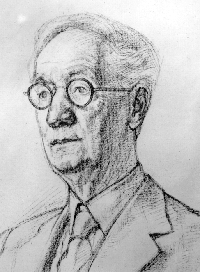
Principal Angus Fulton (1871-1958)
Born and brought up in Dundee, he graduated in 1907 and joined the engineering department as Fidler's assistant. He held the Chair in Engineering and Drawing until retiring in 1946. In World War I he served in the Royal Flying Corp and Royal Air Force investigating accidents due to mechanical defects in aircraft. For the last 7 years of his career he was acting Principal of University College.
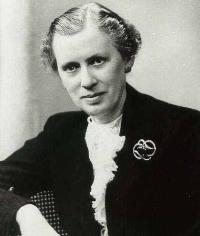
Professor Margaret Fairlie (1891-1963)
Margaret Fairlie was the first woman to hold a professorial Chair in Scotland. She graduated from St Andrews in 1915. Then worked in Dundee, Perth, Edinburgh and Manchester before returning to Dundee in 1919 to run a consultant practice in Gynaecology. After a visit to the Curie Clinic in Paris she became a pioneer user of radium in Scotland. In 1936 she was made Head of Obstetrics and Gynaecology at Dundee Royal Infirmary and was appointed to the Chair in 1940, a post she held till retirement in 1956.
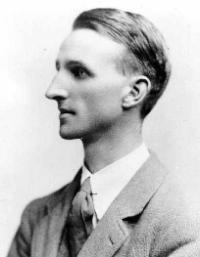
George Dawson Preston (1896-1972)
Educated at Cambridge, George Preston joined the staff of the Metallurgy Division of National Physical Laboratory in 1921. Here he applied the techniques of X-ray and electron diffraction to the study of crystal structures of metal alloys.
Working on the structure of alloys in 1921 he formulated the idea that different atoms show clustering or segregation effects; the so called Guiner Preston zones. The techniques of X-ray and electron diffraction were still in their infancy, and he began a systematic application of them to the crystal structures of metal alloys. This Guiner - Preston effect was used in the early development of the electron microscope. The first electron microscope (one of earliest in Britain) was brought to Dundee by Preston when he came to University College, Dundee from National Physics Laboratory.
He succeeded Peddie to the Harris Chair of Physics in 1943, where his teaching and administration commitments along with low budgets for research meant his work diminished. His tenacity meant that X-ray equipment was somehow created in the department and some work on X-ray crystallography has continued in Dundee since.
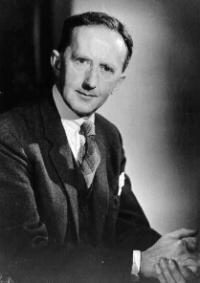
Professor Arthur Donald Walsh (1916-1977)
Arthur Walsh was Professor of Chemistry 1955-76 at Queens College, Dundee. Here he built up the staff of what was a relatively small department. In 1967 he was made Dean of the Faculty Science and was instrumental in restoring Biology to its current status and with creating Biochemistry Department. As convenor of the gardens sub-committee he was a prime mover in developing open spaces on campus and establishing Frankland Court.
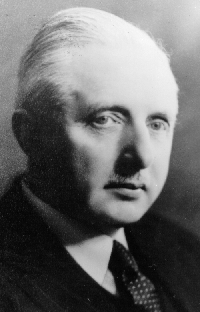
Professor David Rutherford Dow (1889-1979)
David Dow grew up in Crail. He graduated from St Andrews in 1911 and he became an MD in 1924. From here he went on to be a house surgeon at Dundee Royal Infirmary. Dow was made Professor of Anatomy in 1925. He had a reputation as an entertaining lecturer, on one occasion he invited a lady contortionist, appearing at the palace theatre to give a demonstration on the lecture bench. His Burke and Hare lecture was a favourite with students.
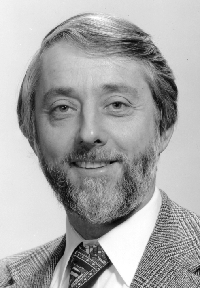
Peter LeComber (1941-1992)
Educated at Leicester University Peter LeComber was appointed at University of Dundee 1968. In 1986 he gained a personal chair in Solid State Physics. Pioneering work into Amorphous Silicon fields and transistors found applications in addressable Liquid Crystal Displays.
He published over 170 papers and was the co-inventor of 10 patents. Everyone who uses a solar-powered calculator or watches a flat-screen TV benefits from his work. He sadly died of a fatal heart attack whilst celebrating his 30th wedding anniversary in Switzerland.
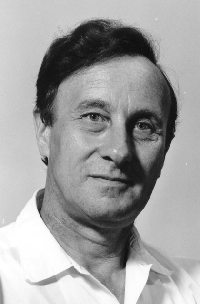
Walter Spear (1921-2008)
Educated at London University Walter Spear became a lecturer at Leicester University. His research looked into the transport properties of crystalline solids, liquids and amorphous semiconductors. Research led to the amorphous silicon photovoltic solar cell. The work of Walter Spear and Peter LeComber has resulted in the industry based on the use of this material - flat screen technology, photocopying, etc.
Images courtesy of University of Dundee Archives
Part of Made to Measure - an exhibition featuring scientific instruments in the University Museum Collections